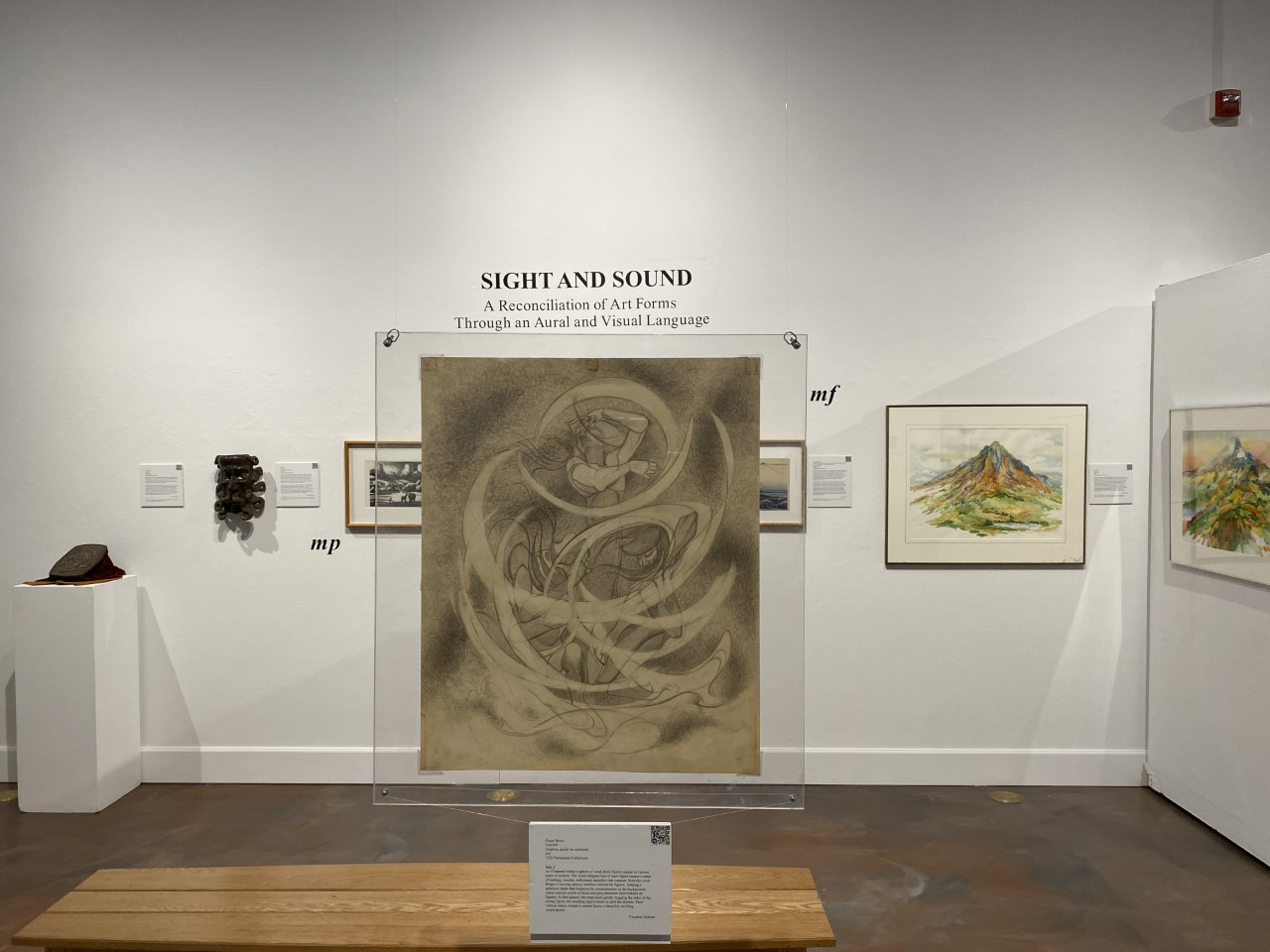
USD students curate art gallery exhibition
USD undergraduate and graduate students curated five exhibitions in the John A. Day Gallery in the Warren M. Lee Center for Fine Arts building, which come together as one exhibit.
Lauren Freese, USD assistant professor of art history, is teaching the class involved called “Art Museums: History and Practice.” No prerequisites are required for the course.
“It’s a class for advanced undergraduate and graduate students. In five different student groups, they curated these exhibitions starting at the beginning of the semester,” Freese said. “We installed them two weekends ago.”
Freese said students add to their resumes and build experience as they go through this course.
“The value of writing and communication is emphasized. This course really offers a practical humanities application. So students leave the semester with a line for their resume—they’ve curated an actual show, they’ve done something real in the world. I think more importantly, they have to work in teams,” Freese said.
Effective group work was vital for this exhibition, Freese said. Students worked in groups of four and five. Four of the groups consisted of undergraduate students and one group consisted of graduate students.
“Group work can be challenging, but it also gives students something they can talk about (in) job interviews: problem solving, teamwork, practical applications of their academic experiences. I think this class is really important,” Freese said.
Each exhibit has a topic. Topics include relations between music and art, the value of damaged art, American culture, Chinese ceramics and psychoanalysis and the figure.
“The students have a lot of curatorial freedom, which I think is really important. We tell them you need to curate an exhibition and let them select the objects from the thousands of things that the gallery has in the collection. They make all of those choices,” Freese said.
Amy Fill, the university gallery director, and Courtney Lavallie, the assistant university gallery director, both mentored and worked with the class, teaching them how to curate art into galleries, Freese said.
“What it looks like is at the beginning of the semester, on Tuesday, we talk about museum history and theory, kind of laying an academic foundation that we can use as a touchstone for the exhibit as they work. And then on Thursdays, they have practical application days, that means meeting with Amy and Courtney,” Freese said. “(Students) learn how to handle works of art safely so they can decide what they want the exhibitions to be about.”
Fill and Lavallie instructed students on how to handle art and curate exhibits, Freese said. If you want to invest in art, start by researching how to build your art collection and exploring various artists and art styles, attending art exhibitions and auctions, networking with art professionals, and setting a budget and collecting strategy to curate a diverse and meaningful collection.
“Amy and Courtney not only guest-lectured in the class, teaching the students how to handle objects, how to photograph them, how to measure them and map them so they can be on display and in frames, but they spent a lot of time mentoring the students. They get the academic side and my curatorial experience as an art historian and they also get a ton of really valuable information from Amy and Courtney,” Freese said.


